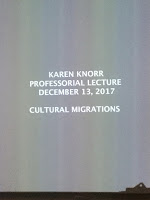Gaujo/Gauji
[non-gypsy]
 My late father would often call me a gypsy as I lead a carefree life and with my dark looks frequently travelled to real and imagined places. He told me there was Roma blood in the family but I cannot verify this statement. For want of a label or perhaps a stereotype, I am a Gaujo, a Romane term for non-gypsy, as I have not uncovered any factual evidence to support this claim. It was simply a term of endearment based on romanticised notions of gypsy culture. However, the research which underpins my current artworks has revealed fascinating narratives of Gypsy/Roma/Traveller (GBT) communities and their cultures but also of the hardships and centuries of world wide persecutions.
My late father would often call me a gypsy as I lead a carefree life and with my dark looks frequently travelled to real and imagined places. He told me there was Roma blood in the family but I cannot verify this statement. For want of a label or perhaps a stereotype, I am a Gaujo, a Romane term for non-gypsy, as I have not uncovered any factual evidence to support this claim. It was simply a term of endearment based on romanticised notions of gypsy culture. However, the research which underpins my current artworks has revealed fascinating narratives of Gypsy/Roma/Traveller (GBT) communities and their cultures but also of the hardships and centuries of world wide persecutions.
Delaine Le Bas is a successful artist, a graduate of St Martins School of Art, a Traveller and an anti-racism campaigner. Delaine's artistic practice includes film, photography, installations and performance. She has an very individual use of textiles and clothing within her works, which are embroidered, hand painted and embellished. An interview with the artist the Travellers Times "Delaine Le Bas - A Strange and Interesting Journey" (published 27 October 2017), Le Bas identifies the themes which underpin her work:
“It’s been a strange and interesting journey. I was really interested in fashion and clothing, that’s why I went to art school, but I ended up being an artist, although clothing and costuming is also part of what I do as well,”
"Delaine says her art is about identity and politics. “Feminism is in there as well,” she says. “It’s also about racism and the different forms that takes, how complex it is, and about where different people stand in society. It’s all wrapped up together and very often a lot of what I am doing has got all of those themes in it.”"
Delaine's use of textiles is inspiring, the juxtaposition of colours, patterns and textures reveals both her heritage but also her art training in the mid 1980s. Textiles are an important layer of narrative within my Mammet series of artworks. Each fabric, each thread, each fastening used has a provenance, a story to tell. Many of the mammets' clothing incorporate works from my previous role as a textile designer during the 1980s and accessories discovered in needlework baskets inherited from my mother and grandmother. Each is a fragment of memory, a portal to a past activity.
 |
| Mammet (George), 2018 wearing 1988 textile |
 |
| Textile Design, 1988 Sara Jayne Harris |
 |
| Mullo, Puri dai Mother, 2018 Sara Jayne Harris |
Mullo is a Romany term for Ghost
Puri dai is a Romany term for old mother/Grandmother
I integrated these words into two printed works to add context and further layers of narrative. Their strange sounds when spoken repeatedly become an echolalia incantation. I am considering using further examples of Romany language within the artworks.
Raklies, kaulo ratti, drom, atchin' tan, diklos, jodaka, putsi, hotchiwichi, bauri, dukkerin, corin.
https://www.travellerstimes.org.uk/features/delaine-le-bas-strange-and-interesting-journey
http://www.romaniarts.co.uk/wp-content/uploads/2012/12/Beyond-the-Stereotypes.pdf
https://www.romaniarts.co.uk/delaine-le-bas-artist/
http://www.reading.ac.uk/merl/imagelibrary/gypsies.html
https://www.theguardian.com/lifeandstyle/2017/jul/22/the-gypsy-wedding-that-changed-my-life
http://www.lowchensaustralia.com/names/romany-english-words.htm
https://www.historytoday.com/becky-taylor/britains-gypsy-travellers-people-outside








Comments
Post a Comment